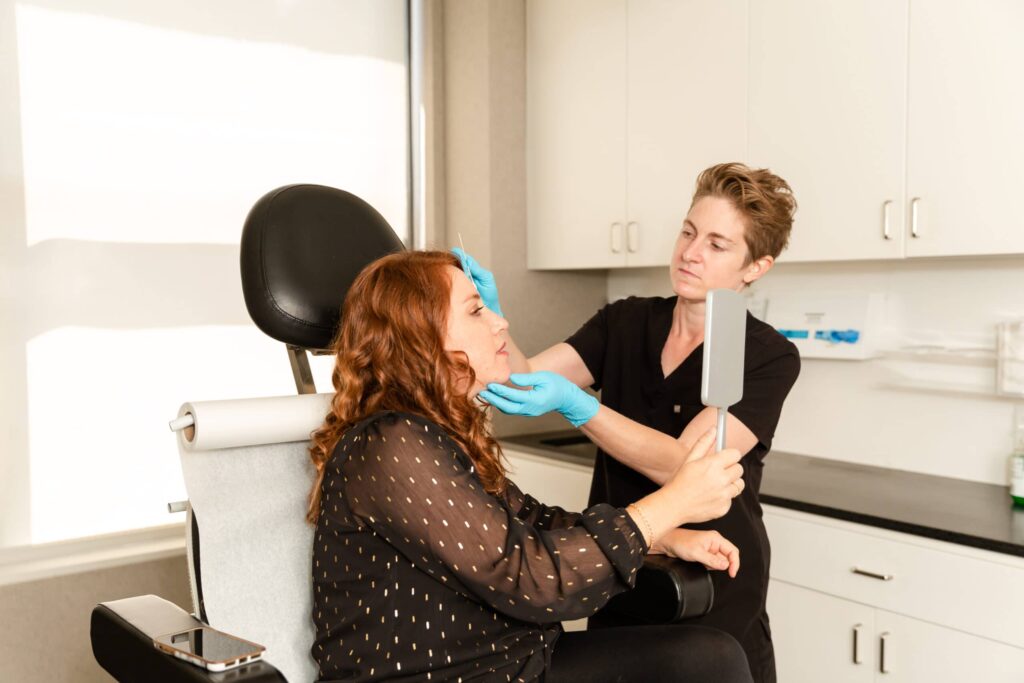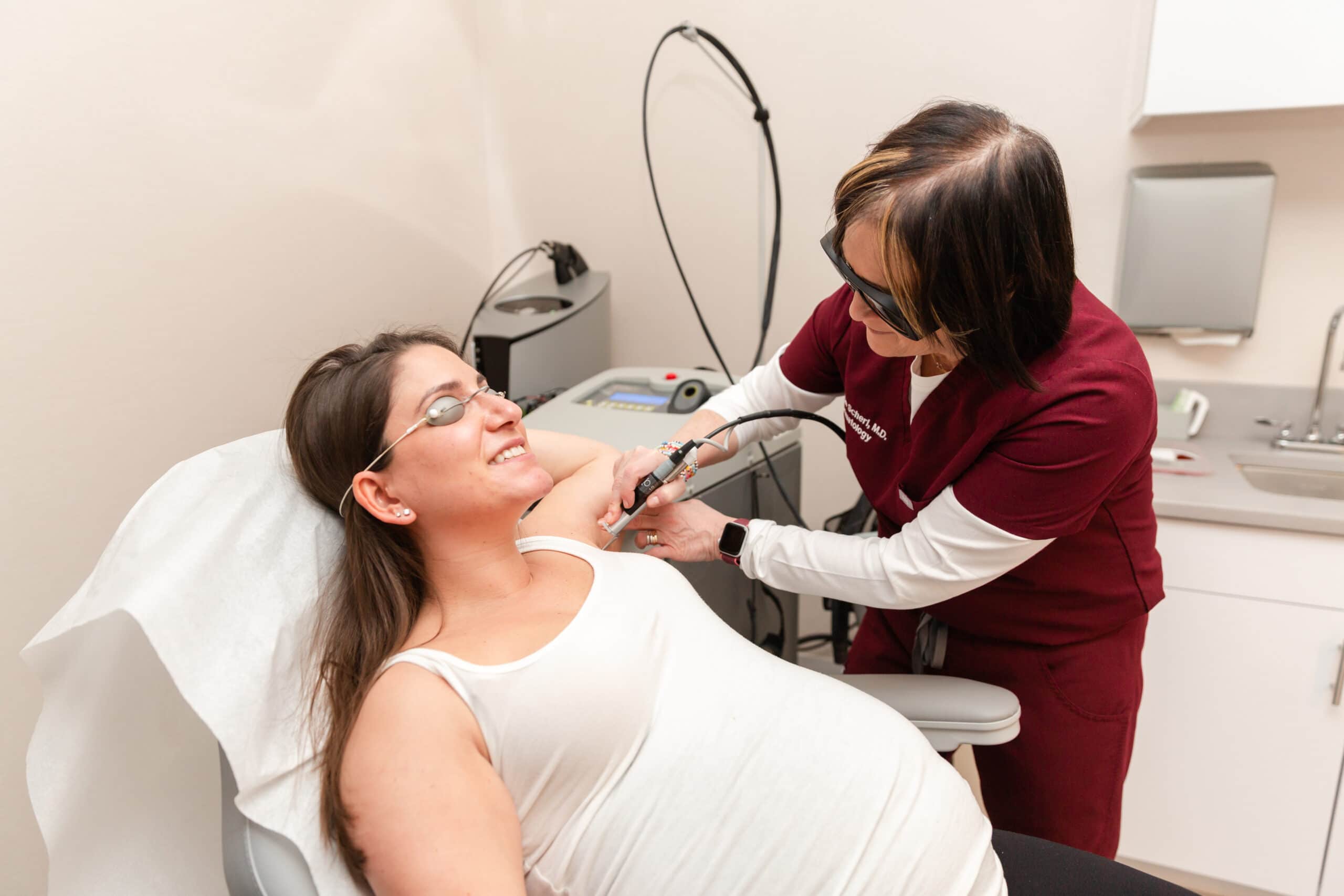
7 Common Summer Skin Issues and How to Treat Them
Summer skin issues, both during and after the season, can have a direct impact on your appearance. Learn about the most common concerns and your treatment options.
Summer is one of the most appealing seasons of the year. The pool, the beach, a summer hike in the mountains, or a camping trip are common outings that create long-lasting family memories, and encourage healthy habits and increased activity. Longer days mean more sun, but excessive exposure increases the risk of skin problems that can cause discomfort or even severe pain.
Do not let those UV rays deter you from enjoying your time in the sun. With prevention steps, simple tips, and some help from your dermatologist, you can enjoy all of your summer activities without worry over sun damage. And if you have damage that lingers once the cooler weather moves in, we can help with that too.
Feel the Burn: Too Much Time in the Sun
Basking in the sun, especially at the beach or poolside, is a favorite summer activity. Unfortunately, this activity allows UV rays to damage your vulnerable skin. We suggest not partaking in sun basking. Exposure without protection not only causes a sunburn, but increases your risk of developing skin cancer. You can prevent a sunburn with these simple tips:
- Use SPF 30 or stronger sunscreen daily. If you are outdoors for long periods, reapply sunscreen every two hours or after your skin gets wet.
- When it comes to sunscreen, more is better. The recommended dose is a shotglass of sunscreen every time you apply it.
- Stay cool in the shade. Limiting your exposure to the sun helps you not only cool down, but reduces your exposure to damaging UV rays.
- Keep your head and eyes protected. Wear a wide-brimmed hat and sunglasses outdoors.
- It might be hot, but wearing lightweight long sleeves and pants prevents the sun from reaching your arms and legs. You can also find special fabrics with UV protection for added prevention.
Sunburns are burns to the skin that can cause moderate to severe pain, but they can be treated:.
- Apply aloe vera gel or lotions with aloe to cool the skin and relieve moderate pain
- Use over the counter pain medications to relieve stronger pain
- If your sunburn is severe, contact your dermatologist for further assessment.
Smooth Skin and Folliculitis: An Unwelcome Combination
Folliculitis is an infection that forms in the hair follicles. The infection results in sore, itchy bumps that look similar to acne. The summer months can exacerbate a folliculitis infection as bacteria builds up from sweaty skin in your open pores.
Folliculitis is treatable with simple home remedies and additionally, with laser hair removal at Scherl Dermatology:
- Clean your skin with a shower promptly after heavy sweating
- Avoid wearing dirty, sweaty clothing. Wash clothes to avoid continual build-up of bacteria
- Use sunscreens that are oil-free or non-comedogenic
- Apply warm compresses to relieve discomfort or drain bumps
- Use itch-relieving creams like hydrocortisone or over the counter antibiotics. If you think you need a topical antibiotic, it is best to come in for an evaluation.
- See your doctor for a prescription to treat moderate to severe symptoms
- Avoid shaving in the affected area
Schedule an appointment for laser hair removal to avoid the problem in the future

Heat Rash: Sooth the Prickle
A sunburn is not the only malady to avoid in the summer months. A heat rash, sometimes called “prickly heat” (the sensation from rash bumps bursting), occurs when sweat glands become clogged. Excessive heat from increased exposure or exertion creates sweat and clogged sweat glands. A heat rash is characterized by small, itchy bumps that often appear on the thighs or abdomen, but can appear in other areas as well. Heat rashes are preventable and treatable.
To prevent heat rash:
- Wear cool, light-weight clothing
- Exercise during cooler times of the day
- Keep dry by wiping sweat from the skin
- Cool off with a shower, fans, or air conditioning
- Use cornstarch powders
Treatment for “prickly heat” is possible with over the counter cream with corticosteroids or steroids as well as itch-relieving creams. Persistent rashes may not respond to simple remedies, so contact your dermatologist to schedule an appointment if your rash does not improve with over the counter treatments.
Break Free from Breakouts
Acne can significantly impact your confidence in your appearance. The summer months call for fun in the sun, but the hotter temperatures can easily cause a breakout. When you touch your face, the oil, dirt, and sweat can get trapped in your pores, and bacteria builds up to produce an acne breakout.
Acne can be treated in several ways:
- Gently wash your face and other areas of the body that may be prone to acne regularly
- Remove cosmetics to keep pores clean and free from build-up
- Avoid squeezing pimples
- Use topical over the counter creams to clear up acne breakouts, or come in for an evaluation for acne that does not improve
- Wash bed sheets and pillowcases once a week to avoid a bacteria build-up
Your dermatologist can treat all types of acne, but you can also play an active role in caring for your skin during the hot summer months by following a healthy skincare regimen.

When Melanin Goes into Overdrive
The pigmentation, known as melanin, protects your skin from sun exposure by darkening or “tanning.” Melanin may go into overprotection mode if the skin is overexposed, which may exacerbate a condition known as melasma.
Melasma is a common dermatological condition that causes dark brown patches on the face. Melasma commonly occurs on the upper lip and cheeks, but can occur anywhere on the face.
Managing melasma may be as simple as protecting your face from the sun, wearing SPF 30 (or stronger) sunscreen, and wearing a hat. Medications or products with hydroquinone (to bleach the skin) are available over the counter, and also in prescription strength, to treat and manage melasma. Your dermatologist may also offer professional treatments using a variety of devices that reduce the pigment and the discoloration.
Don’t Touch That! When Poison Ivy Strikes
If your summer activities include gardening, hikes or camping, you may be exposed to plants in the woods that look pretty, but they pack a punch with their poisonous oils that cause annoying, uncomfortable rashes. Poison ivy is a common shrub-like plant that has an oil called urushiol, and when it comes in contact with your skin it causes an allergic reaction – or poison ivy dermatitis – on the skin. The rash is usually very red, extremely itchy, and may be accompanied by blisters. For your outdoor activities to remain enjoyable, follow these pointers:
- Know what poison ivy looks like – stay away from the three-leaved plants in the woods
- Stay protected – wear pants and long-sleeved shirts
- If you are not sure about a plant – avoid touching it
You can treat a poison ivy rash with some simple remedies or help from your dermatologist.
- If you think you have been exposed, wash the area with soap and water right away to remove the invisible oil, known as urushiol, that creates the rash.
- When the rash begins, see your Dermatologist right away
- A cool bath or oatmeal bath may sooth the irritation
- A medicated cream or oral medication from your dermatologist may treat more severe rashes
Say Bye to Dry
Staying hydrated is always healthy for your body on the inside – but it is just as healthy for your skin. Outdoor activities in the summer keep you close to the pool, ocean, or lake, but hot weather can also dry your skin, creating more discomfort. Just as heat causes evaporation on many surfaces, the hotter temperatures can evaporate the moisture in your skin. After a long day in the sun gardening, working in your garage, sitting by the pool, hiking in the mountains, or camping, your skin may feel drier or brittle. Heat is not the only culprit; air conditioning can also dry out your skin.
When you use a quality moisturizer every day, you can keep your skin hydrated, but your skin demands more attention with increased sun exposure. Here are some easy at-home remedies to hydrate your skin and give it a healthy glow:
- Take warm showers to remove chemicals that can dry the skin
- Apply moisturizer after showering (pat gently – do not rub your skin to dry)
- Use sunscreen with moisturizer
Bring Your Summer Skin Concerns to Scherl Dermatology
Avoid the summer skin issues that keep you from enjoying your days in the sun, and keep Scherl Dermatology in mind for all of your skin concerns. From summer sun exposure to complex skin conditions, you can trust Scherl Dermatology to protect the health of your skin. Call today to schedule your appointment!

